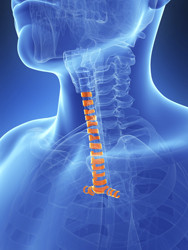Bioengineering for tracheal replacement
Primary tracheal cancers have a high mortality rate, and adversely affect the lives of thousands of patients each year throughout Europe. In almost all cases, surgical removal with reconstruction is regarded as the gold standard of treatment. However, even for patients with operable tumours, the success rate of operations involving complete tumour resection is less than 60 % due to the difficulties of reconstructing the trachea. Making a tissue-engineered trachea involves using a donor trachea that is subject to a process that removes all donor cells and antigens. An alternative approach is to make it from biosynthetic materials which mimic the properties of the native trachea. The next step is to repopulate the tracheal scaffold with the patient’s own cells. However, a major limitation is the time required for this recellularisation, which may be critical for a cancer patient. The EU-funded 'Biomaterials for tracheal replacement in age-related cancer via a humanly engineered airway' (BIOTRACHEA)(opens in new window) project aims to both improve the approach used for decellularising biological tracheal scaffolds, and to develop approaches using synthetic scaffolds. One of the major goals of the consortium is to facilitate the rapid transfer from the results of research into commercial products for tissue engineering and cell-based therapy. During its first year, the consortium focused on platform technologies, developing a synthetic scaffold for in vitro and in vivo testing. In vitro testing of the synthetic scaffold has been completed. The scaffold was shown to have suitable mechanical properties and is biocompatible with the patient. A hollow organ bath system has been developed to enable ex vivo testing of entire organ scaffolds. The new bioreactor both removes donor cells and repopulates it with the patient’s cells automatically. Cell adhesion, growth and cell proliferation takes place on the scaffold while it is inside the bioreactor. A platform for data and knowledge exchange has been established and the official BIOTRACHEA website is now online. The end goal of the consortium is to perform 'first-time-in man' clinical trials. For this purpose, a bioethics committee has been established and work has started to develop an appropriate regulatory strategy to obtain approval for the trials. BIOTRACHEA project results will have significant long-term impact on health care, scientific research and business within the EU. The work will help to revolutionise the treatment of hollow organ cancers.







